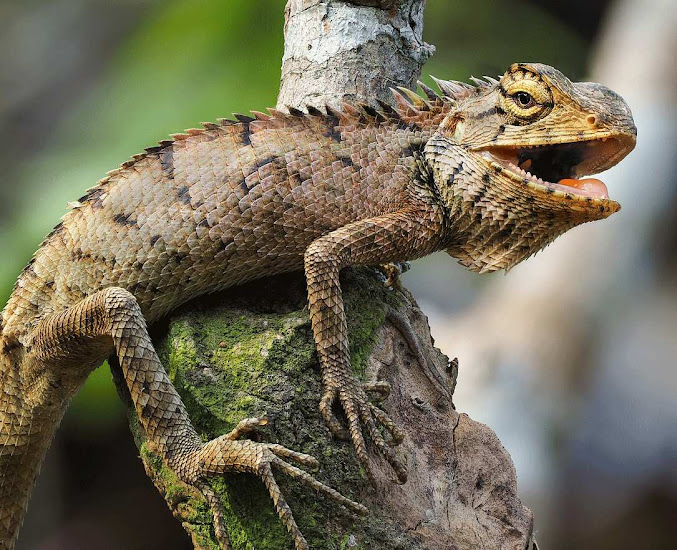Red-eyed Tree Frog
About Red-eyed Tree Frog
Because of their enormous protruding red eyes, it's not hard to perceive red-eyed tree frogs. This outsider-like component is a guard system called "surprise tinge." When the frog shuts its eyes, its green eyelids assist it with mixing in with the verdant climate. In the event that the nighttime frog is drawn nearer while snoozing during the day, its nowhere-open eyes will quickly deaden the hunter, giving the frog a couple of moments to get away. Nonetheless, the frogs' eyes are not their main design explanation! To match the splendor of their eyes, these frogs have radiant lime-green bodies that occasionally include traces of yellow or blue. As per their temperament, red-eyed tree frogs might turn into a dim green or rosy earthy colored tone. They have white paunches and throats yet their sides are blue with white lines and vertical white bars. Their feet are radiant red or orange. Proficient climbers, red-eyed tree frogs have cup-like footpads that empower them to go through their days sticking to leaves in the rainforest overhang, and their evenings chasing after bugs and more modest frogs. Male red-eyed tree frogs can grow up to two creeps long and females can grow up to three inches.
Brilliant Variations
These notorious tropical jungle creatures of land and water rest by day adhered to leaf bottoms with their eyes shut and body markings covered. When upset, they streak their protruding red eyes and uncover their immense, webbed orange feet and dazzling blue-and-yellow flanks. This strategy called frighten tinge, may provide a bird or snake an opportunity to stop and think, offering a valuable moment for the frog to spring to somewhere safe and secure.
Their neon-green bodies might assume a comparative part in upsetting hunters. A large number of the creatures that eat red-eyed tree frogs are nighttime trackers that utilize sharp vision to track down prey. The stunning shades of this frog may over-invigorate a hunter's eyes, making a befuddling phantom picture the remaining parts behind as the frog bounces away.
Range
The Caribbean side of Focal America up to Mexico.
Territory
They are tracked down living just in trees (arboreal) in wet,
marsh rainforests. They are many times tracked down close to a wellspring of
water, like a stream or stream.
Diet
These frogs are savage (meat-eating) and fundamentally eat various bugs including
crickets, grasshoppers, flies, and moths. Nonetheless, they will eat anything that will fit in their mouth
counting different creatures of land and water.
Life length
5 years in nature.
Portrayal
They are little frogs with guys averaging 2" long and females averaging 3".
They procured their name in view of the splendid red eyes that stick out from their head. The highest point of
their body is a dazzling green with their base shrouded in various tones including orange, blue,
furthermore, cream. Their legs are long with toes intended for getting a handle on and adhering to leaves and branches.
Rearing
Females lay a grasp of 20-60 eggs over water on the
underside of a leaf and leave the eggs. At the point when the fledglings hatch,
they fall into the water. Transformation requires around 90 days and
when it is finished, the frogs return to the trees.
Conduct/Variations
Grown-up red-eyed tree frogs seldom drop to the
woods floor and burn through the greater part of their lives in the trees on the grounds that their
legs are intended for strolling on tree limbs, not so much for swimming.
These frogs ordinarily eat around evening time. They depend intensely on the shock
strategy for catching prey. The splendid varieties on their undersides or
"streak tones" occupy and frighten hunters, allowing the frogs an opportunity
to get away from risk. These frogs are likewise superb jumpers.
Predators
Birds, Snakes, reptiles, Wasps, and different bugs
Preservation
However the red-eyed tree frog itself isn't imperiled, its rainforest home is under
consistent danger
Red-Eyed Tree Frog Fun Facts
· By day, red-eyed tree frogs will cover their splendidly shaded flanks with their appendages and shut their eyes to rest. This stance helps disguise them against leaves and furthermore lessens water misfortune
· red-eyed tree frogs are not toxic












